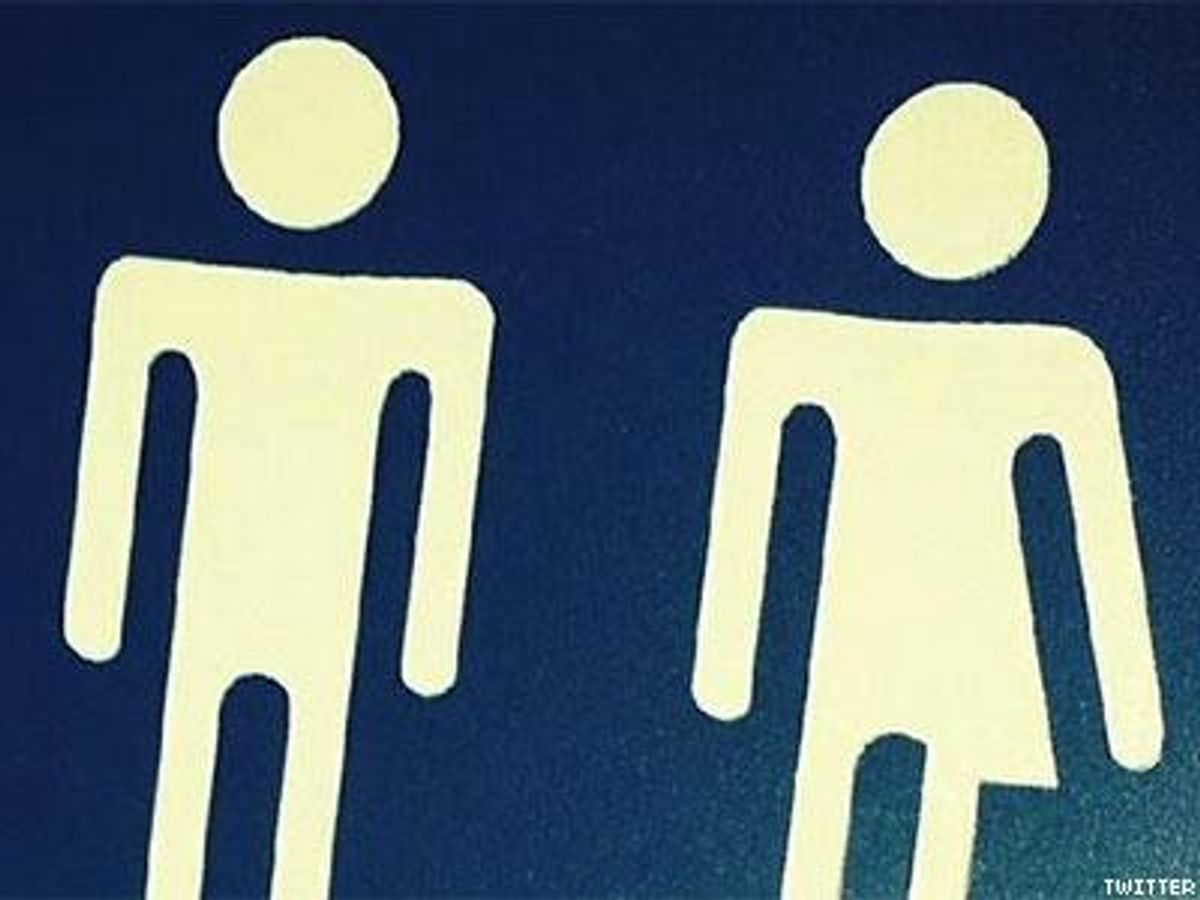"Are you transgender?" This is the question everyone's asking me lately thanks to Caitlyn Jenner. Back in the day, they'd just ask if I was a man or a woman. Things were a lot simpler then.
"I'm not transgender." To this the interrogator raises an incredulous eyebrow. I have to be, they argue. There's no way a woman can look like me and not be.
I am 5 foot 9, weigh 180 pounds, and am not fat. I practically have the same bone structure and shoe size as LeBron James. In public, strangers often refer to me as "sir" and "he." When I was younger it bothered me. Now I'm used to it.
But not all the time.
"Do you have to go to the bathroom?" My girlfriend asks me in the middle of a crowded mall in Queens on a Saturday night. "No," I lie. I've just endured two hours of her trying on clothes and my bladder has expanded exponentially with every dress, blouse, and pair of skinny jeans she's tried on. But there's no way I'm going into a crowded women's-only restroom.
A few years back, I went out to a sports bar with a close friend. Eventually she and I made our way to the women's room. There was a line inside. A bartender came out of the stall, and when she saw me, she shoved me into the wall and yelled in my face. I explained to her (not in a very nice way) that I was a woman and left. It was embarrassing. Plus I hate confrontations. And ever since it happened I've depended on an elaborate scheme to prevent it from happening again: If I have to pee, I wait until I get home.
If only I were the only one in this situation. There are thousands, if not millions, of people who are easily mistaken for the opposite sex -- like Cortney Bogorad, a cisgender (nontrans) woman who is suing the Fishbone restaurant chain after she was manhandled and thrown out after using one of its restrooms (employees did not believe she is a woman even though she showed them ID). Add to that around 700,000 transgender people in the United States who often cannot use public restrooms of their choosing.
To most people, gender-segregated bathrooms are just common sense. But there's a whole history behind them. The story goes like this: A long, long time ago, before most people even had electricity, women began working alongside men in factories for the first time. And someone said, "If women work here, we're going to have to give them their own toilets, because obviously if we don't they'll all end up getting raped." I'm not sure if someone actually said that, but since a lot of people make this same argument today, they probably did back then too.
So in 1887, Massachusetts passed the first law mandating gender-segregated toilets, and gender-nonconforming people have been holding their bladders ever since. Current state and municipal building codes dictate gender-segregated restrooms, as well as exactly how many toilets and urinals buildings, businesses, and other public entities must provide, based on occupancy capacity. Very few provide gender-neutral bathrooms as an alternative, because they are often prohibited.
These regulations are not just inconvenient for myself and transgender people. Women often have to wait twice as long as men to use the restroom, since the women's restroom is also usually the kids' restroom. Thankfully, some companies now have family-only restrooms for people with children, and others are beginning to include changing stations in men's rooms, so both dads and moms can take children to the bathroom. But there are few businesses that provide this.
Rather than adjust the regulations to meet the reality, many policymakers, like Florida Republican Rep. Frank Artiles, have pushed bills that would punish trans people for using public restrooms that correspond with their gender identity. Such laws would increase transphobia and put trans people and cisgender people like myself at risk, since many would feel empowered to play gender cop. After all, you cannot tell what's between a person's legs just by looking at them. And I doubt many Americans would support transphobic regulations when they themselves are being asked to show ID at the bathroom door.
Luckily, the federal government is siding with the trans community on this issue, and that's a great thing. The Occupational Safety and Health Administration recently released a set of guidelines urging employers to give transgender employees access to bathrooms that correspond to their gender identity. It's a great start, but is it the best answer?
Many argue that gender-neutral restrooms -- like this one recently installed at Monroe Community College in Rochester, N.Y. -- are key. Such restrooms would be entirely inclusive of everyone, eliminate long lines (much of the time), and assure everyone's privacy. But for that to happen, laws need to be rewritten. Building codes need to be modified. And hearts and minds need to change.
 JULIE COMPTON is a writer and communications specialist living in New Jersey and New York. Follow her @julieallmighty
JULIE COMPTON is a writer and communications specialist living in New Jersey and New York. Follow her @julieallmighty


 JULIE COMPTON is a writer and communications specialist living in New Jersey and New York. Follow her
JULIE COMPTON is a writer and communications specialist living in New Jersey and New York. Follow her 















































































